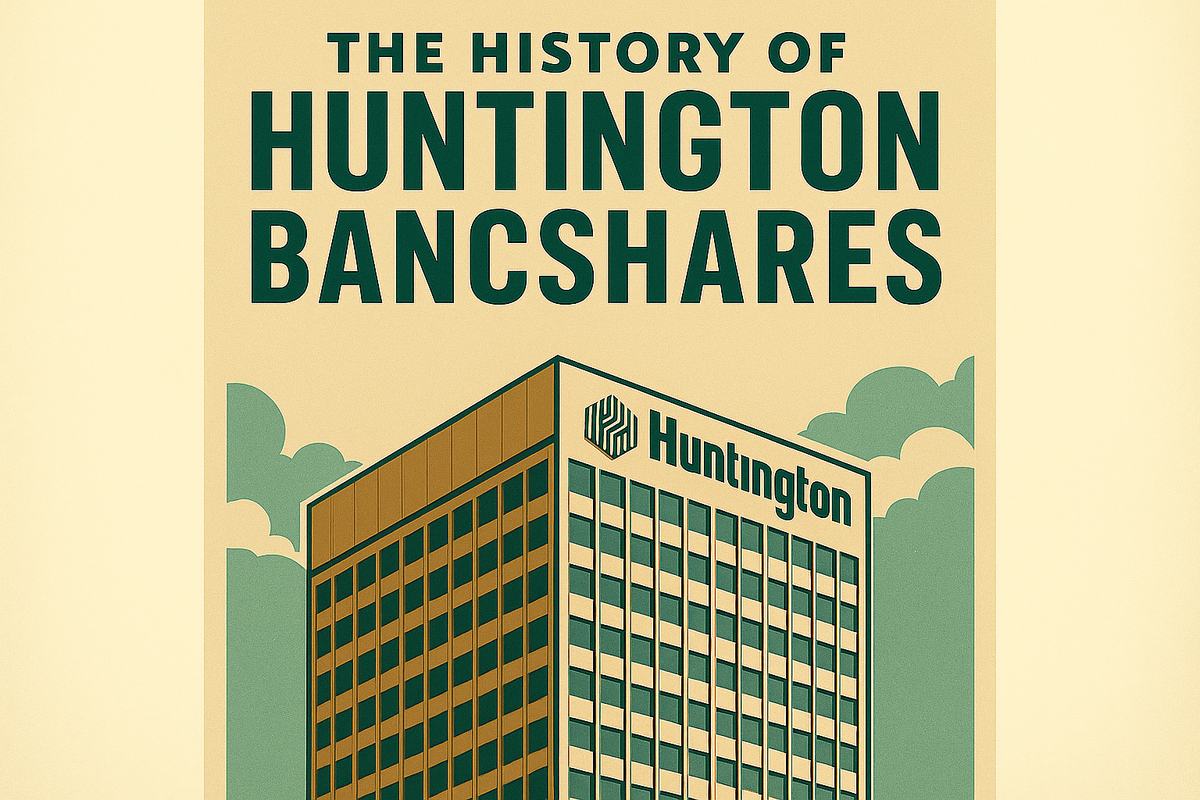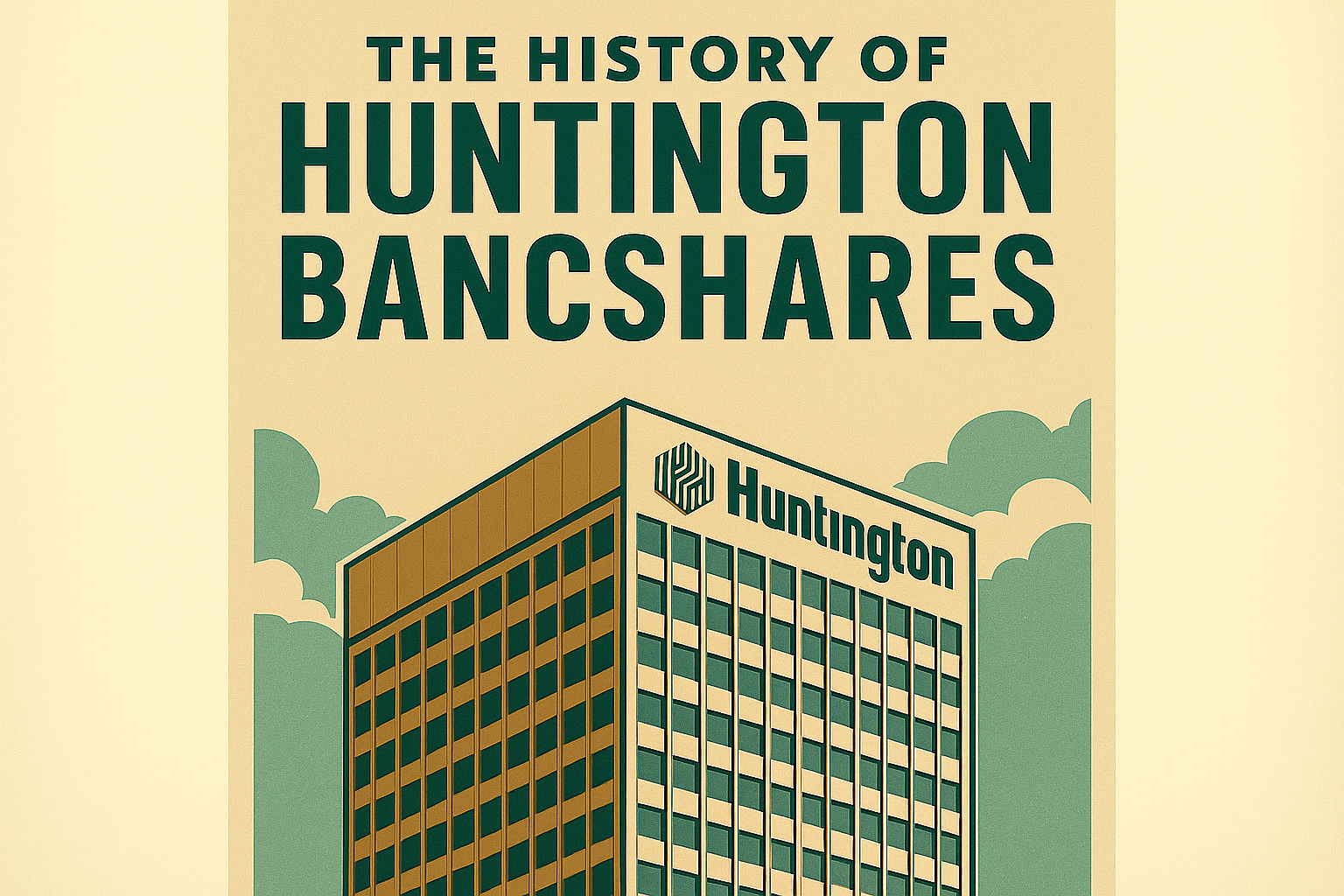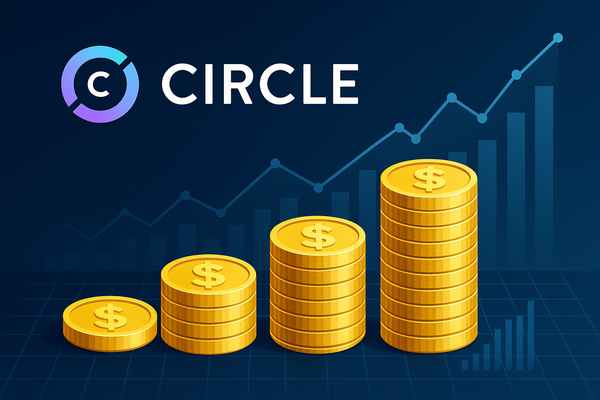The History of Huntington Bancshares: From Regional Player to Midwest Banking Giant


Huntington Bancshares, a name now synonymous with community-focused banking across the Midwest, has a rich history dating back more than a century. As one of America’s most recognizable regional banks, Huntington’s journey has been marked by steady expansion, strategic mergers, and a relentless commitment to serving local businesses and consumers alike.
Early Roots: The Birth of Huntington
The story of Huntington Bancshares began in 1866 in Columbus, Ohio, just a year after the Civil War ended. P.W. Huntington, a former hardware merchant, saw the need for a trustworthy banking institution in the rapidly growing city. With an initial capital investment of $200,000, he established P.W. Huntington & Company. The new bank quickly earned a reputation for integrity and reliability, which allowed it to attract business from merchants, manufacturers, and local governments.
By the early 20th century, the Huntington National Bank (its name after 1905) had established itself as a fixture in the Columbus financial community. As the Midwest experienced industrial expansion and population growth, the bank’s assets and customer base steadily increased. Surviving the Great Depression—a time when many financial institutions failed—further cemented Huntington’s place in the region’s banking landscape.
The Era of Expansion: Post-World War II Growth
After World War II, the American economy boomed, and Huntington was poised for growth. The 1950s and 1960s saw the bank expand beyond its Columbus roots, opening new branches across central Ohio. This period also marked the beginning of its forays into banking innovation: Huntington was among the first banks in the Midwest to adopt computerization for record-keeping and operations, streamlining customer service and back-end efficiency.
As the U.S. banking industry evolved in the 1970s and 1980s, Huntington capitalized on opportunities presented by deregulation. The company reorganized as a bank holding company—Huntington Bancshares Incorporated—which provided the flexibility to acquire other financial institutions. This era saw Huntington broaden its reach through a series of acquisitions, including banks in northern Ohio and Michigan, and later in Indiana, Kentucky, and West Virginia.
Building a Regional Powerhouse: Strategic Acquisitions and Brand Strength
Huntington’s acquisition strategy accelerated in the 1990s and early 2000s. The company made several high-profile purchases, each strengthening its market presence and diversifying its business lines. Notably, the acquisition of First Michigan Bank Corporation in 1997 gave Huntington a substantial footprint in western Michigan. The purchase of Unizan Financial in 2006 expanded its presence in eastern Ohio.
One of the most transformative deals came in 2016, when Huntington acquired FirstMerit Corporation, a significant regional bank headquartered in Akron, Ohio. The $3.4 billion deal was, at the time, the largest in Huntington’s history. It nearly doubled the bank’s branch network and catapulted Huntington into the ranks of the top 20 largest banks in the United States by assets.
Throughout this period, Huntington maintained its focus on community banking. It invested in local initiatives, sponsored cultural and sporting events, and developed products tailored for small businesses and individuals. Huntington’s recognizable green “Welcome” sign became a familiar sight throughout the Midwest, reinforcing its brand as a friendly, approachable bank.
Surviving Financial Turmoil and Embracing Innovation
The 2008 financial crisis challenged the entire banking sector, but Huntington weathered the storm better than many of its peers. Thanks to prudent risk management and a conservative approach to lending, the bank avoided the worst of the mortgage meltdown. While it did receive government support through the Troubled Asset Relief Program (TARP), Huntington repaid the funds ahead of schedule, emerging from the crisis with renewed strength.
In the years following the crisis, Huntington doubled down on digital innovation. Recognizing the shifting preferences of consumers, the bank launched a robust mobile app, enhanced its online banking platform, and rolled out advanced ATM technology. Huntington also developed new products such as its “Asterisk-Free Checking” account, targeting customers tired of hidden fees and complex terms.
Recent Developments: Continuing to Grow in the 2020s
In the 2020s, Huntington has continued its tradition of bold moves. In 2021, it completed another major merger, this time with TCF Financial Corporation. The combined company, now operating as Huntington Bancshares (NASDAQ:HBAN), further strengthened its position as a Midwest banking leader, especially in Michigan, Minnesota, and Colorado. The deal pushed Huntington’s total assets past $170 billion and expanded its branch footprint to more than 1,100 locations.
Today, Huntington remains headquartered in Columbus, Ohio, and employs over 20,000 people. Its business includes a mix of retail, commercial, and wealth management services. The company continues to emphasize personalized customer service, competitive digital offerings, and a strong connection to the communities it serves.
The Road Ahead: Balancing Tradition and Transformation
As it looks to the future, Huntington faces challenges common to the banking industry—rapid technological change, heightened regulatory scrutiny, evolving consumer expectations, and the competitive pressures of fintech disruptors. Yet its long history of adaptation and customer focus positions it well to navigate the shifting landscape.
Huntington Bancshares’ journey from a single-branch operation in 1866 to a regional banking powerhouse is a testament to the power of resilience, prudent management, and a deep-rooted commitment to community. For investors, employees, and customers alike, Huntington’s past offers insight into its future—one shaped by both tradition and transformation.
Disclaimer: This article is for informational purposes only and should not be construed as investment advice. Please consult with a qualified financial advisor before making investment decisions.



